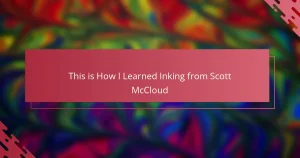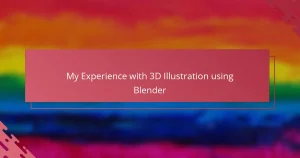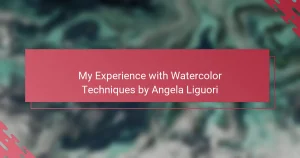Key takeaways
- Digital painting merges traditional techniques with digital tools, providing artists freedom to experiment without fear of mistakes.
- Procreate’s intuitive design and powerful features, such as customizable brushes and workflow enhancements, transform the creative process for illustrators.
- Customizing the Procreate workspace and using techniques like layering and blending can significantly enhance the depth and quality of artwork.
- Effective presentation of digital artwork involves thoughtful curation and showcasing the creative process to engage audiences better.
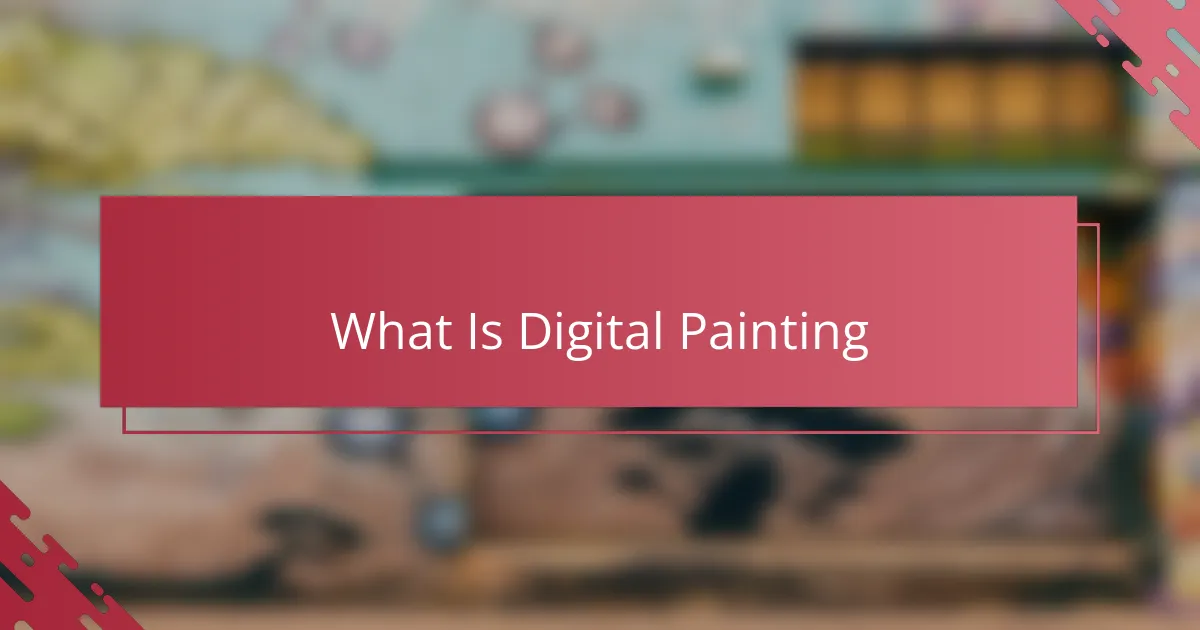
What Is Digital Painting
Digital painting is a creative process where artists use software and digital tools to create artwork that resembles traditional paintings. I’ve found it fascinating how it blends the tactile feel of brush strokes with the endless possibilities of digital technology.
At first, I wondered if digital painting could capture the same emotion and depth as canvas and paint. But when I tried it myself, I realized it offers a unique freedom—no need to worry about mistakes ruining the piece, and layers allow for experimentation like never before.
Isn’t it amazing how digital painting opens doors to new styles and techniques while keeping the essence of art intact? For me, it’s both a challenge and a joy to explore this evolving medium that perfectly suits today’s illustrator portfolio.
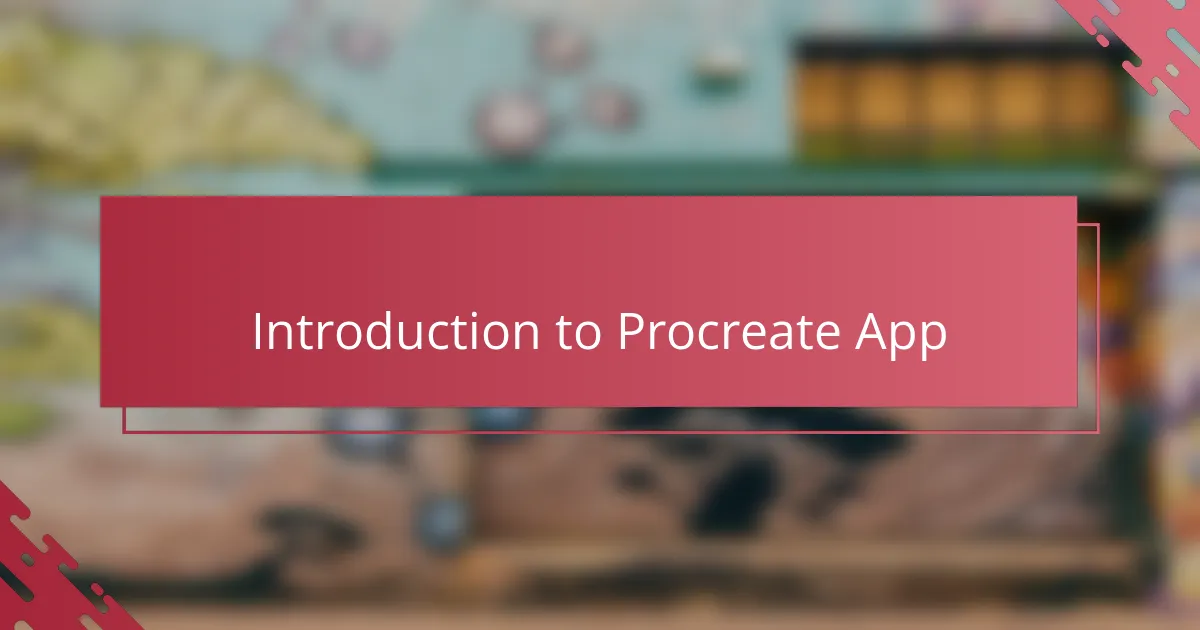
Introduction to Procreate App
When I first discovered Procreate, I was immediately drawn to its sleek design and intuitive interface. It felt like holding a full art studio right in my hands, perfectly tailored for the iPad. Have you ever wished for a tool that just lets your creativity flow without technical barriers? That’s exactly how Procreate feels—effortless and inspiring.
What surprised me most was the app’s powerful brush engine. Each stroke responds with such natural variation that it almost fooled me into thinking I was back to painting with real brushes. Plus, the vast library of customizable brushes means you’re never limited in style or texture—something I didn’t expect from a digital tool.
Procreate also made me rethink my entire workflow. Features like layers, undo options, and time-lapse recordings transformed how I create and share my art. It’s not just an app; it’s become a vital creative partner that constantly pushes me to experiment and grow as an illustrator. Have you tried something that changed the way you approach your craft so completely?
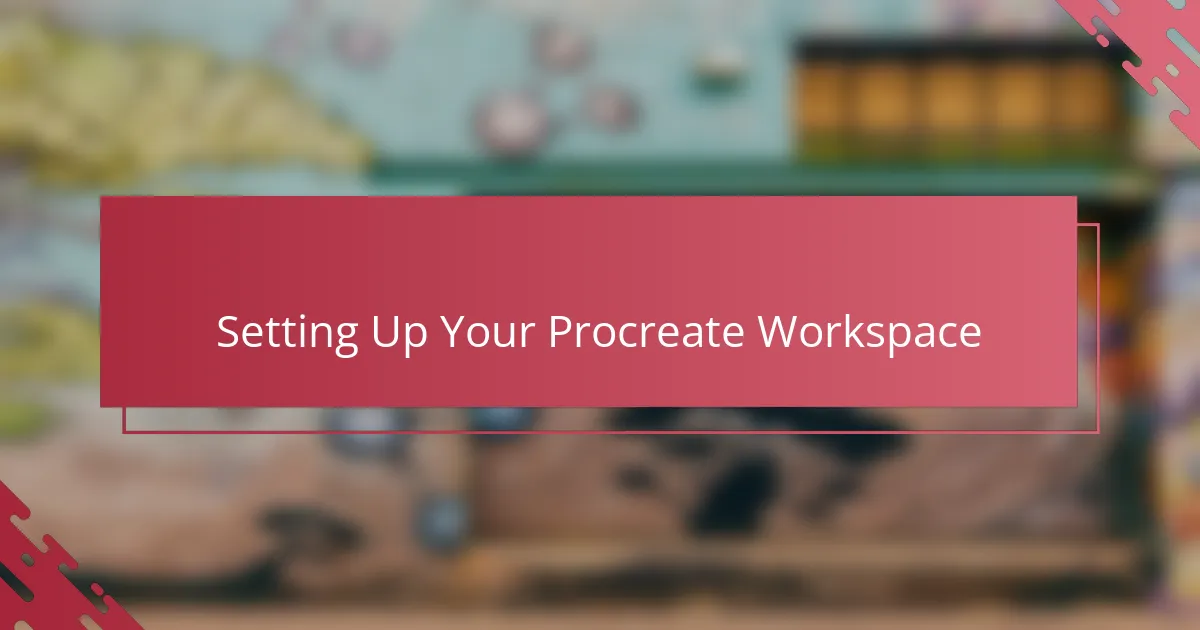
Setting Up Your Procreate Workspace
One of the first things I did when starting with Procreate was customizing my workspace to match how I naturally work. Adjusting the brush size slider and organizing my favorite brushes right at my fingertips made a huge difference—it felt like tailoring my studio exactly to my needs. Have you ever noticed how simply arranging your tools can boost your creative flow?
I also explored setting up the quick menu and gesture controls, which initially seemed like small details but quickly became game-changers for me. Swiping and tapping shortcuts helped me stay immersed in the painting process without constant interruptions. It’s amazing how these tiny tweaks can make the whole experience smoother and more intuitive.
Moreover, the ability to create and save custom color palettes added a personal touch to my workspace that keeps my projects visually consistent. Building these palettes made me reflect on my style and preferences, turning setup into a creative moment itself. Don’t you find that having your favorite colors ready and waiting sparks ideas before the first brushstroke?
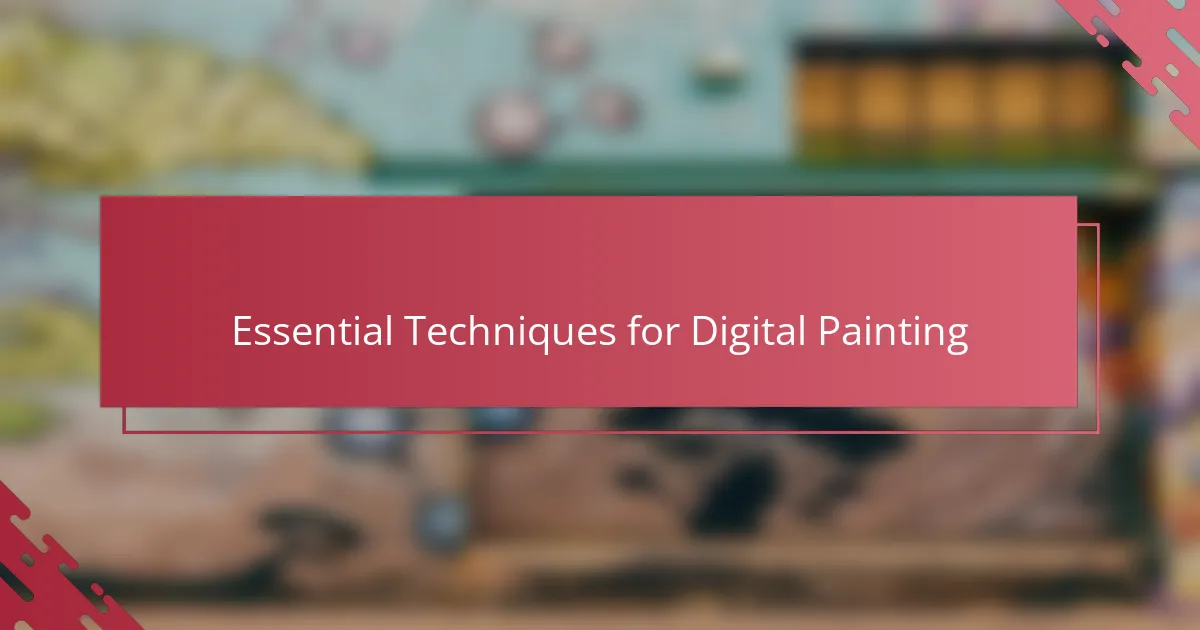
Essential Techniques for Digital Painting
For me, mastering essential digital painting techniques was a turning point in truly embracing Procreate. Understanding how to layer effectively means more than just stacking colors—it’s about building depth and mood that breathe life into the artwork. Have you ever noticed how a well-placed shadow or highlight can completely change a piece’s atmosphere?
Blending brushes became another technique that transformed my workflow. At first, I struggled to replicate smooth gradients, but experimenting with Procreate’s smudge tools and pressure sensitivity unlocked a new realm of softness and realism. It’s incredible how subtle variations in stroke pressure can evoke such different textures, from rough canvas to delicate skin.
I also realized the power of using reference layers and masks to control color and details without fear of ruining earlier work. This non-destructive approach felt liberating, letting me push boundaries while keeping mistakes easily reversible. Have you tried working this way? It’s like having the safety net that encourages bolder creative leaps.
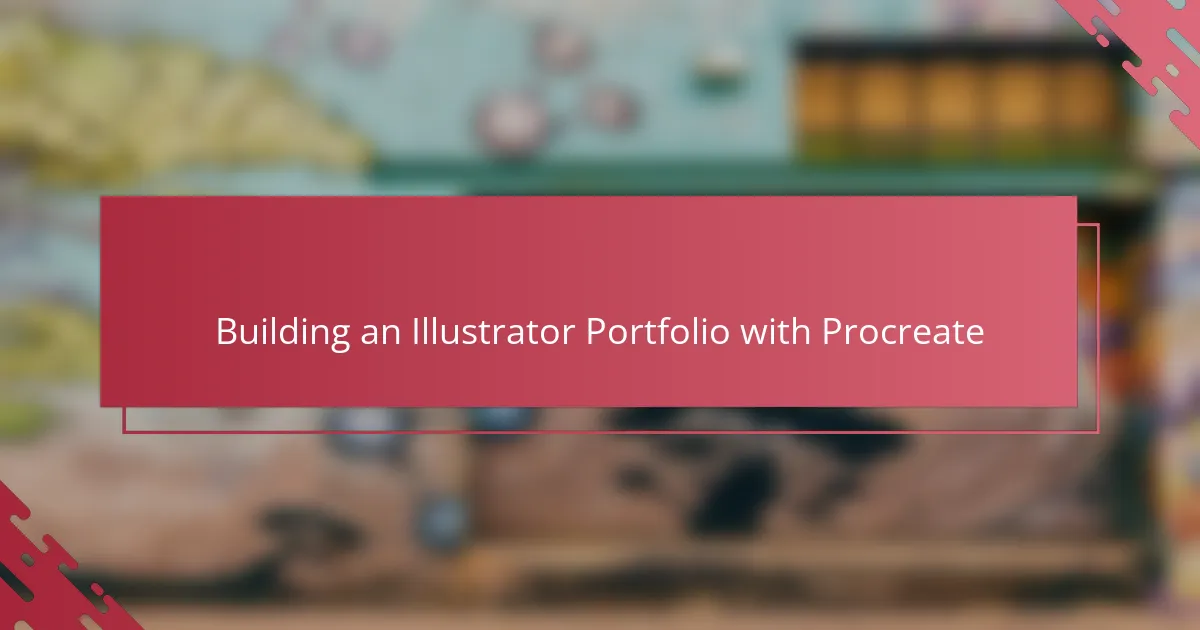
Building an Illustrator Portfolio with Procreate
Building an illustrator portfolio with Procreate felt like crafting a digital gallery that truly represents my evolving style. I found that Procreate’s flexibility allowed me to experiment freely, creating diverse pieces that showcase everything from bold character designs to delicate textures. Have you ever felt stuck trying to present your art in one cohesive space? Procreate helped me break out of that box, enabling me to develop a portfolio that feels both professional and uniquely mine.
One thing I noticed was how easy it became to update and refine my portfolio on the go. Instead of waiting to be at my desktop, I could tweak compositions or add new work right from my iPad during a coffee break or a commute. This immediacy made the whole process less daunting and more dynamic—like my portfolio was growing alongside me. Isn’t it amazing how digital tools can fit so seamlessly into our daily creative rhythms?
Also, the ability to export high-resolution files directly from Procreate meant I could quickly prepare portfolio-ready images for websites, print, or client presentations without needing extra software. This streamlined workflow boosted my confidence because I knew I was always ready to share polished work whenever opportunity knocked. Have you experienced that rush when everything just clicks and your tools serve your vision effortlessly? That’s the power Procreate brought to building my portfolio.
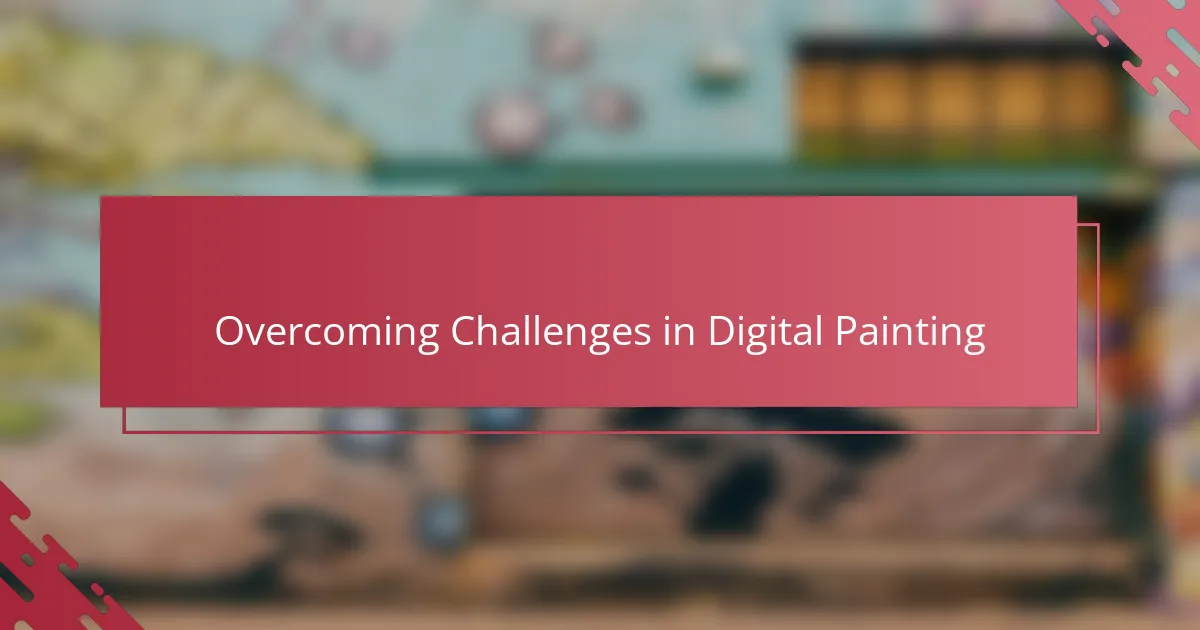
Overcoming Challenges in Digital Painting
Overcoming the initial overwhelm was probably the toughest hurdle for me. When I first opened Procreate, the array of brushes and settings was both exciting and intimidating. Have you ever felt paralyzed staring at a blank digital canvas, unsure where to start? I found that breaking the process down into small, manageable steps helped me build confidence bit by bit.
Another challenge was adapting my traditional painting instincts to a digital environment. At first, I missed the tactile feedback of brush on paper. But as I practiced, I started to appreciate how Procreate’s pressure sensitivity and customizable brushes could mimic real textures in surprising ways. It made me realize that embracing digital painting means letting go of some habits and welcoming new possibilities.
Finally, managing the technical aspects—like file sizes, layer limitations, or learning shortcuts—sometimes tested my patience. I remember spending hours watching tutorials and experimenting to find my rhythm. Yet, every little breakthrough, like mastering gesture controls or optimizing my canvas settings, felt like a personal victory. Don’t you think those moments of problem-solving make the creative process even more rewarding?
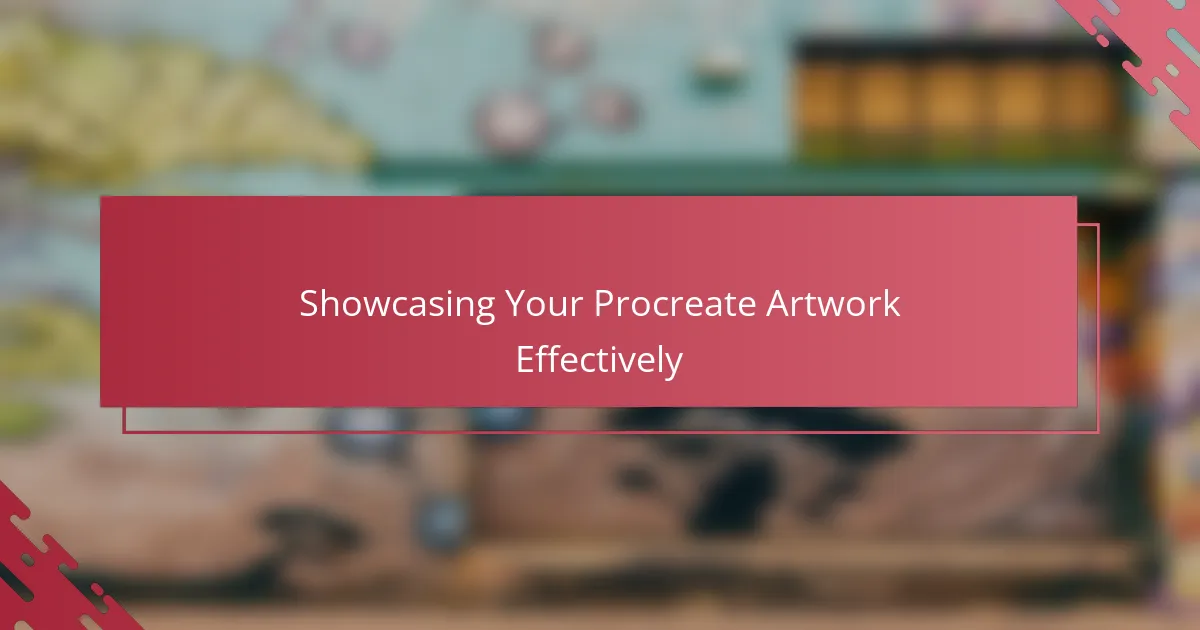
Showcasing Your Procreate Artwork Effectively
Presenting your Procreate artwork in the best light is just as important as creating it. I learned early on that simply uploading a raw digital file rarely does justice to the time and care invested. Instead, I started using mockups and clean, consistent backgrounds to let my art truly speak for itself—have you ever noticed how a well-chosen context can make your illustration pop?
Another step that changed the game for me was curating pieces thoughtfully rather than displaying everything at once. Showing a cohesive collection that reflects my style and strengths helped me build a narrative around my work. It made me realize that effective showcasing isn’t about quantity; it’s about clarity and connection with the viewer.
Plus, sharing progress shots or time-lapse videos captured directly in Procreate gave my audience a glimpse into my creative journey. They weren’t just seeing the finished product; they were invited into the process, making the entire experience more engaging and personal. Have you tried letting your audience in behind the scenes? It might just deepen their appreciation for your art.
